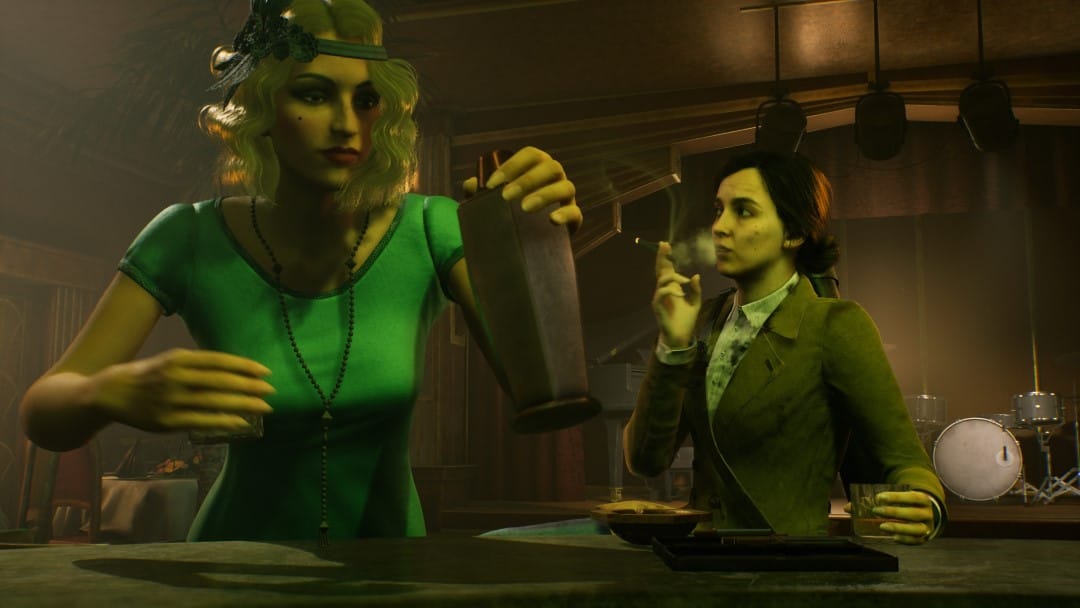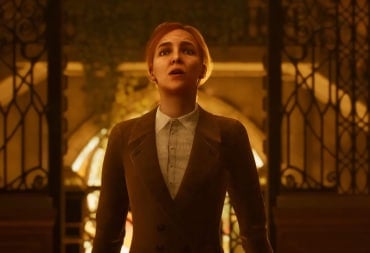Discerning horror fans are aware of Alone in the Dark's legacy. The original 1992 release was a pioneer of survival horror, introducing many ideas, tropes, and gameplay elements that would be refined by the more well-known Resident Evil series.
Given the recent trends of remaking horror classics, it is no surprise that THQ Nordic has decided to do the same here. Thankfully, this new Alone in the Dark is a great atmospheric horror experience backed up by solid, if familiar horror tropes.

Returning to Derceto in Alone in the Dark
The setup of Alone in the Dark is nearly identical to the original release. You play as either detective Edward Carnby or client Emily Hartford as you investigate the disappearance of Emily's uncle Jeremy Hartford. Jeremy was last seen at the secluded Derceto Manor, sequestered away in the bayous of Louisiana.
As you delve further into the mansion, it becomes clear that something isn't right. Arcane symbols and books depicting dark rituals are uncovered. In addition, Edward and Emily's sanity is called into question by gaps in their memory, visions of monstrosities, and doorways to different worlds opening up within the manor's halls. Has something beyond mortal ken infested the manor, or has the protagonists' grip on reality slipped away?
That is where comparisons to the original taper off. It is made clear this Alone in the Dark uses the framework of the 1992 original while remixing or repurposing elements from it. If you think you know this story, the swerves will surprise you. It's the kind of reboot I am in favor of, one that doesn't treat the original as a roadmap but as a jumping-off point to new stories.

Some of this creative license pays off. First and foremost is the game's stellar atmosphere and art direction. While the original Alone in the Dark started as a conventional 1930s haunted house story, this reboot draws a lot of its visual identity from Southern Gothic media.
Not only does this make Derceto Manor distinct from Resident Evil's Spencer Mansion, but it blends with the Lovecraftian undertones to make something distinct. The mansion isn't just a symbol of wealth and status falling into decay, it is physically rotting from the humid swamp around it. The residents aren't just exposed to potentially supernatural horrors, but nature itself is framed as a chaotic opposing force.

This genre shift also affects the characters and tone. Ironically, Alone in the Dark has a modest supporting cast. They range from tortured creative artists, destitute drunks, emotionally troubled children, and uptight caretakers. While some characters can feel one-note, the small handful of scenes they have are well-directed, showcasing intriguing character interplay.
In addition, each supporting character heightens the central mystery, either by having some unresolved business or outwardly dancing around certain questions. Usually adding more characters to a horror narrative blunts the feeling of isolation and helplessness, but in the context of this occult mystery, it raises the tension.
Special mention must be given to the voice-acting and music. David Harbour and Jodie Comer may be embodying conventional horror/noir stocktypes in their roles as Edward and Emily, but the actors do a great job making them feel like well-rounded characters. A compelling blend of sympathetic, damaged, yet determined and resourceful. The soundtrack is packed with Doom Jazz: a mix of dark industrial metal with jazzy saxophones and percussion. Not only does it add to the atmosphere, it sticks in your mind and will not let go.
Bolstering these performances is a great script by the game's lead writer. Mikael Hedburg has plenty of experience with cosmic horror and compelling character dynamics, which is put to great affect in Alone in the Dark. When their credits include Amnesia: The Dark Descent and SOMA, you know you're in for something special.

Alone in the Dark Review – Fighting Old Demons
The developers of this new Alone in the Dark are in a precarious situation. While the series helped pioneer survival horror, the entire genre has grown by leaps and bounds. Therefore, what exactly can a modern entry provide players?
Pieces Interactive's solution is a pared-down return to basics. Gameplay is broken up into two sections. One part has you explore the manor, looking for clues and solving puzzles. The other has you entering surreal otherworlds fighting monsters with whatever you have on hand.
The puzzle sections are decent, if uninspired. Sliding tile puzzles. Light key-hunting. Parsing written notes for key information. All standard genre fair, elevated by some excellent voice-over narration of all written notes.

The same can be said of the action sections. Gunfights are intense thanks to how limited the game's resource economy is. There were a few times early on when I ran out of handgun bullets or swore out loud from a wasted shotgun blast in a heated battle. It wasn't just a shot wasted, but one of maybe twelve shots I had on me.
There is an attempt to add some variety to these encounters, but the results are mixed. Players will get to entertain stealth mechanics, but it feels underdeveloped. Thankfully, stealth sections don't lead to instant game-overs which is a plus. You can save ammo by throwing bricks and bottles at enemies, even set enemies ablaze with Molotov cocktails, which is great for bottlenecking certain encounters. Lastly, there is melee combat, but weapons break down quickly and the swing animations lack impact.

What holds the combat sections back mostly comes down to variety and scenario design. There are rarely more than three enemies on screen at a time. Enemy variety ends at around three or four different enemy types. Finally, encounter design amounts to either straightforward arenas or jumpscare ambushes. There are some setpieces and boss battles but you can count them on one hand.
Alone in the Dark Review – Done By The Book
Taken as a whole, the core gameplay of Alone in the Dark works but doesn't push the envelope. When a fight breaks out, it induces both excitement and panic. When you're solving a puzzle, the solution doesn't feel obtuse. The central story balances mystery revelations with supernatural complications expertly.
When that reliable gameplay is coupled with stellar art direction and story pacing, Alone in the Dark becomes a compelling supernatural mystery. Up to the credits rolling, I kept asking questions, gripped by what was going on. When a fight broke out, I kept nervously checking my ammo count and lining up shots in a panic, desperately trying to stay alive.

While I enjoyed the lean, focused gameplay of Alone in the Dark, it can be a threadbare experience for horror veterans. There is no inventory management, no RPG elements, and no weapon upgrades to be found here. As a vehicle to push the narrative forward, it works. But it may be too bare for seasoned players.
My only real critique is how underwhelming the two different campaigns are. Playing as Edward or Emily does lead to different cutscenes, character interactions, and one major sequence near the end, but the major beats of the campaigns are identical. Same rooms, same keys, same setpieces. If you're expecting Leon and Claire's campaigns from Resident Evil 2, adjust your expectations.
As for optional side content, there are hidden collectibles called Lagniappes. These can be collected in sets of three, which either provide additional information on the story, unlock hidden story objectives, and even alternate endings. These do add some replay value to the experience, but they're aimed at completionists only.

Alone in the Dark Review – Final Thoughts
If you enjoy Southern Gothic atmosphere and a twisty supernatural plot, than Alone in the Dark is well worth your time. Just know the gameplay, while great at bringing classic horror tension, might be more scaled back than you expect.
Alone in the Dark was reviewed on PlayStation 5 with a copy provided by THQ Nordic over the course of 17 hours of gameplay - all screenshots were taken during the process of review.
Review Summary
Pros
- Foreboding Southern Gothic Atmosphere
- Twist-Filled Central Mystery
- Challenging Survival Horror Gameplay
Cons
- Limited Action Scenario Design
- Scaled Back Gameplay May Turn Off Horror Veterans
Have a tip, or want to point out something we missed? Leave a Comment or e-mail us at tips@techraptor.net












